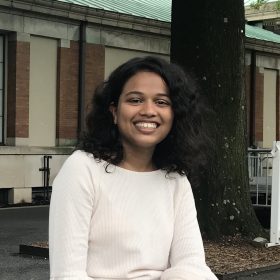Read this blog post in Spanish here.
Dr. Paula Villanueva is an architect, engineer, researcher and Assistant Professor in the Department of Building Structures and Physics at the Technical University of Madrid. She recently co-authored a JoVE video article demonstrating an Installation Method to Enhance Quality Control for Fiber Reinforced Polymer Spike Anchors.
On the International Day of Women and Girls in Science (February 11th), we spoke with Dr. Villanueva about her current work, the difficulties and rewards of conducting scientific research, and new advances in the field of engineering.
On her motivation to study architecture and engineering, and her current work
Dr. Villanueva: “I studied Architecture at the Polytechnic University of Madrid and, later, I did the Master’s and Doctorate degrees in Engineering of Structures, Foundations and Materials. My choice was motivated by my interest in engineering and, particularly, in the physics of materials and structures. Furthermore, I have always been interested in cultural heritage and the technical aspects of its conservation. I am currently a full-time professor at the Higher Technical School of Architecture in Madrid, in the Department of Building Structures and Physics. My job includes continuous training to keep up-to-date with new developments in the sector, especially for postgraduate classes, and participation in research projects.
In recent years I have combined research with professional practice in building rehabilitation work and civil work. Recently, by obtaining a full-time position at the university, I am trying to explore more lines of research of an interdisciplinary nature (architecture, topography, archaeology, materials science).”
On the challenges and rewards of being a researcher
Dr. Villanueva: “The main challenges young researchers must face have to do with the research structures and funding of the work. In addition to needing materials and equipment to investigate, it is essential to establish a network of contacts to be able to make your work visible. Research is often seen as very expensive, but it is seldom considered how researchers try to cut back as far as possible without jeopardizing the rigor and value of their results. The most rewarding thing is to observe the possible practical applications of research projects, when they are carried out.
What I enjoy the most about my work is supervising doctoral theses, because it allows me to combine high-level research and teaching with people who are already well-trained, who can make the most of this process of carrying out the thesis.”
On new and anticipated developments in the field of engineering
Dr. Villanueva: “I think that the different areas of engineering have more in common with each other than is often thought, and that an interdisciplinary collaboration could greatly benefit certain areas. For example, in recent years, many advances in materials science and nano-materials have been applied to biomedicine and aerospace; however, such advances generally arrive relatively late in civil engineering and construction. I consider materials science to be a field with great potential in the coming years, as it intersects with various areas.
I believe that engineering is introducing many tools that improve the control and synchronization of work, which results in better quality and coordination within teams. In this sense, I believe that aspects such as Machine Learning of the IoT (Internet of things) are applicable in various branches of engineering and allow for the optimization of many processes. I am currently working with some colleagues in the field of cultural heritage conservation with digital twins, integrating BIM [Building Information Modeling] and sensorial methodology for preventive heritage conservation.”
To commemorate the International Day of Women and Girls in Science, our team has curated a special playlist of JoVE science videos. This playlist will remain free to access until February 28th, 2021.


